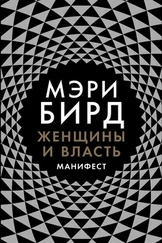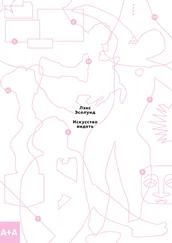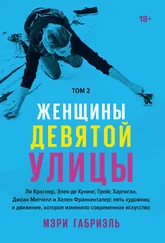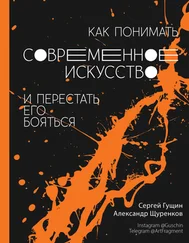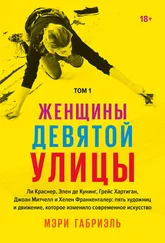Глава 1. Лена, Ленор, Ли
Cindy Nemser, Art Talk , 58.
Lillian Kiesler, interview by Ellen G. Landau, AAA-SI, 2–3.
Lillian Kiesler, interview by Ellen G. Landau, AAA-SI, 3–4.
Lillian Kiesler, interview by Ellen G. Landau, AAA-SI, 4.
Lillian Kiesler, interview by Ellen G. Landau, AAA-SI, 4; Larry Rivers with Arnold Weinstein, What Did I Do? , 79.
Goodman, Hans Hofmann , 52; Jeffrey Potter, To a Violent Grave , 64–65; Clement Greenberg, interview by Mitch Tuchman, AAA — SI, 2. Гринберг рассказывал, что «Ли… была одной из „звездных“ учениц Гофмана, и Поллок через нее тоже многое перенял от маэстро. Думаю, что он получил от тесного общения с Гофманом больше, чем осознавал».
Ellen G. Landau, Lee Krasner: A Catalogue Raisonné, 10, 300–301; Lee Krasner, interview by Barbara Novak, AAA-SI, 5; Gail Levin, Lee Krasner , 24, 40–41; Nemser, Art Talk , 83; Munro, Originals , 103.
Oral history interview with Lee Krasner, 1972, AAA-SI; Levin, Lee Krasner , 50, 55; Landau, Lee Krasner: A Catalogue Raisonne , 14, 301.
William H. Chafe, Women and Equality , 27; Marjorie Rosen, Popcorn Venus , 75–76.
Oliver W. Larkin, Art and Life in America , 10–11, 110–111; Richard D. McKinzie, The New Deal for Artists , 4; Celia S. Stahr, «The Social Relations of Abstract Expressionism, An Alternative History», 301; Rozsika Parker and Griselda Pollock, Old Mistresses , 38. Художница Мэри Кэссет, по ее признанию, решила переехать во Францию, так как в Европе женщина может рассчитывать на то, что в ней будут видеть «кого-то, а не что-то».
Steven Naifeh and Gregory White Smith, Jackson Pollock , 372.
Lee Krasner, a Conversation with Hermine Freed , videotape courtesy of PKHSC; Lee Krasner, interview by Barbara Rose, AAA-SI, 9; Juanita H. Williams, «Woman: Myth and Stereotype», 238–39. Даже величайшие мыслители Запада обрекали женщин на подчиненное положение в физическом и интеллектуальном плане. Гегель, например, говорил: «Женщины могут быть образованными, но для высших наук, как философия, и для некоторых произведений искусства, требующих всеобщего, они не созданы». А, по словам Ницше, «мужчина должен быть воспитан для войны, а женщина — для отдохновения воина; все остальное — глупость».
Lee Krasner, interview by Barbaralee Diamonstein-Spielvogel, provided by Barbaralee Diamonstein-Spielvogel, interviewer and author, from Inside New York’s Art World (© Dr. Barbaralee Diamonstein-Spielvogel), 204.
Nemser, Art Talk , 83; Lee Krasner, interview by Barbara Rose, 1975 GRI; B. H. Friedman, «Lee Krasner», черновик рукописи 1965, Series 2.4, Box 10, Folder 7, Lee Krasner Papers, AAA — SI, 2; Levin, Lee Krasner , 30; Lee Krasner, interview by Barbara Novak, AAA — SI, 7.
Oral history interview with Lee Krasner, November 2, 1964–April 11, 1968, AAA — SI; Levin, Lee Krasner , 38–39; Landau, Lee Krasner: A Catalogue Raisonne , 301.
Levin, Lee Krasner , 49–50, 54–56; Ines Janet Engelmann, Jackson Pollock and Lee Krasner , 9; Naifehand Smith, Jackson Pollock , 378.
Levin, Lee Krasner , 13, 59–61.
Oral history interview with Harold Rosenberg, AAA — SI; Naifeh and Smith, Jackson Pollock , 377.
Levin, Lee Krasner , 92, 95–96; Naifeh and Smith , Jackson Pollock , 378–81; Potter, To a Violent Grave , 64–65.
Lillian Kiesler, interview by Ellen G. Landau, AAA — SI, 5; Potter, To a Violent Grave , 65.
Levin, Lee Krasner , 62, 80–81; Lillian Kiesler, interview by Ellen G. Landau, AAA-SI, 3; Robert Hobbs, Lee Krasner (1993), 16; Naifeh and Smith, Jackson Pollock , 379.
Schapiro, Modern Art, 136; Larkin, Art and Life in America , 360–61; Sidney Janis, Abstract and Surrealist Art in America, 30; Herschel B. Chipp, Theories of Modern Art , 502; Jack A. Hobbs, Art in Context, 502. Первым направлением «современного» искусства в Америке была «Школа мусорных ведер», просуществовавшая примерно с 1907 по 1912 г. Это движение можно отнести к современному искусству в том смысле, что его предметом были уличная жизнь и занятия «маленького человека», а не быт представителей состоятельных слоевобщества, которые покупали произведения искусства для украшения домов.
Willem and Elaine de Kooning, interview by Peter Busa and Sandra Kraskin, AAA — SI; Hobbs, Art in Context , 505–6; Dore Ashton, The Life and Times of the New York School , 30–31, 36; Chipp, Theories of Modern Art , 506.
Lynes, Good Old Modern , 4.
Lynes, Good Old Modern , 13–14, 20–21, 32–33.
John Bernard Myers, Tracking the Marvelous , 171; Lynes, Good Old Modern , 20, 249; Marquis, Alfred H. Barr, Jr., 272–273.
Lynes, Good Old Modern , 43–44.
Lynes, Good Old Modern , 447; oral history interview with Lee Krasner, November 2, 1964– April 11, 1968, AAA-SI.
Landau, Lee Krasner: A Catalogue Raisonné , 302.
Lee Krasner, interview by Barbara Rose, 1972, AAA-SI, 1.
Lee Krasner, interview by Barbara Novak, AAA — SI, 11; Levin, Lee Krasner , 67; Lee Krasner, interview by Barbara Rose, 1972, AAA — SI, 1.
Terry Miller, Greenwich Village and How It Got That Way , 124.
Barbara Rose, Lee Krasner: The Long View , videotape courtesy PKHSC; Levin, Lee Krasner , 49; Deborah Solomon, Jackson Pollock , 112; John Lee Post, interview by author.
Naifeh and Smith, Jackson Pollock , 379; Lee Krasner , interview by Barbara Novak, videotape courtesy PKHSC; Lee Krasner, interview by Barbara Rose, 1972, AAA — SI, 1.
Читать дальше
Конец ознакомительного отрывка
Купить книгу
![Мэри Габриэль Женщины Девятой улицы. Том 1 [Ли Краснер, Элен де Кунинг, Грейс Хартиган, Джоан Митчелл и Хелен Франкенталер: пять художниц и движение, изменившее современное искусство] обложка книги](/books/397801/meri-gabriel-zhenchiny-devyatoj-ulicy-tom-1-li-kra-cover.webp)





